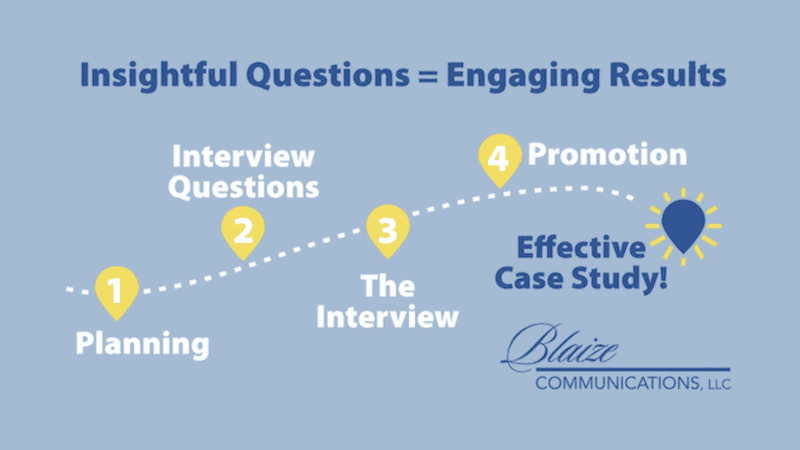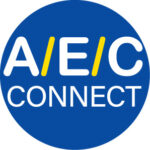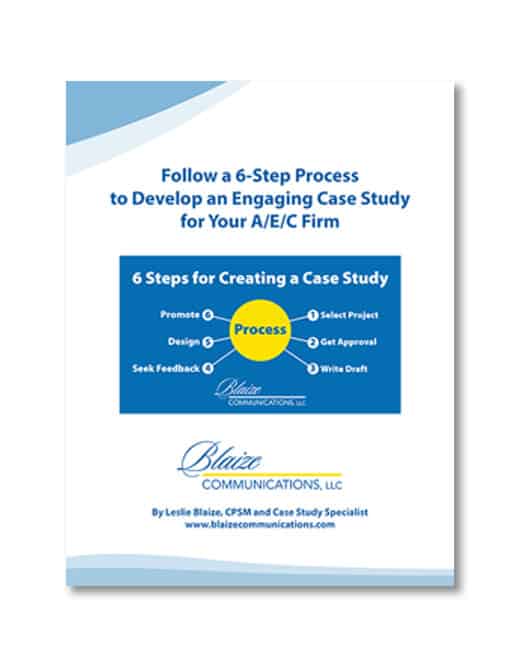Questions drive the case study creation process. Through the use of insightful inquiries, you can create a compelling story that captivates readers and demonstrates the expertise of your Architecture/Engineering/Construction firm.
Generative AI has its place, but it can’t interview individuals or ask follow-up questions. You need the human connection.
Be curious in all phases of the case study development, from planning discussions through the interview process and promotion. Ask open-ended questions. And then, carefully listen to the answers so you can seek additional insights, if appropriate.
Planning
Developing a client-focused A/E/C case study begins with the planning. What strategic projects should be considered for case studies? Are there completed projects that align with future projects your firm is pursuing?
Seek input from company leaders, marketers, business developers, and seller-doers. What are the most pressing needs for the next year?
After discussing potential projects, you can choose the ones that will provide the best return on investment. You don’t want to develop a success story that won’t be used.
Preparing Interview Questions
Before working on a specific case study, the writer should understand the strategic intent of this marketing piece. Your success story will reflect that emphasis.
As part of the process, consider your case study reader. What information would they want to know related to the project?
Here’s where AI can help. For example, ask AI to write a diary entry as the proposed happy client. What fears or concerns would they have related to the project? Be specific about the services your company is providing. What challenges do they want the A/E/C company to solve?
Before the interview, develop and share questions with the A/E/C company and the happy client. The basic framework is that the case study will reveal the challenge, solution, and result of a successful project. Go beyond those questions to discover more.
Be prepared to inquire about any unexpected obstacles or instances where an A/E/C professional exceeded a client’s expectations. The answers will add some intrigue to the case study.
Here are some additional interview questions to consider:
- How and when did you decide you needed our A/E/C company’s service? What key factors influenced your decision to choose our company over competitors?
- What was the most surprising thing that happened during the process?
- What was the most noteworthy thing you learned during the project?
- How well has our service solved your problems?
- What have been the results so far?
- Have our solutions contributed to the sustainability or efficiency of your project?
- Did our company help you meet industry-specific regulations or standards?
- What would you tell a peer about your experience?
- Is there anything else you would like to add regarding your experience with the firm?
Conducting the Interview
After developing your questions, set up an interview with the happy client. Send them the questions in advance so they can prepare. I like to research the happy client and project before the interview.
Consider well-known interviewers like Oprah. She’s an attentive listener who encourages her interviewees to share their thoughts. She’s also ready with excellent follow-up questions. You might want to consider her approach as you conduct your interview.
It’s a good idea to ask for further clarification of answers. Here’s a good response: “Can you tell me more about it?”
You also could ask, “How did you feel when …?” You may get some insightful comments from this question.
It’s helpful to paraphrase answers offered by the happy client to make sure you understand their remarks. Clarify any issues before the interview ends. This approach may cut down on the number of edits.
In his book How to Know a Person, author David Brooks writes, “When you are asking a good question, you are adopting a posture of humility. You’re confessing that you don’t know and you want to learn. You’re also honoring a person.”
Promoting the Case Study
The value of a client-focused case study is that it can be sent to prospects, displayed on your website, and distributed to appropriate personnel.
You also can:
- Save quotes as testimonials
- Create slides for client interviews
- Use content in social media posts
As a final part of the process, suggest ways to use your case studies and ask for input. What’s working, and what can be improved
Insightful Questions = Engaging Results
Questions are the key to developing effective case studies. Go beyond a project’s technical details and look for some drama in the project’s implementation. You want to show how an A/E/C company’s expertise made a difference for the client.
Need a Case Study?
Are you considering a case study for your firm? Feel free to reach out for more information at blaizecommunications@gmail.com. I’m also available to present on developing impactful case studies or how to use content to stand out in an AI world.
For more tips about case studies and storytelling in the A/E/C industry, subscribe to A/E/C Connect LinkedIn Newsletter.



